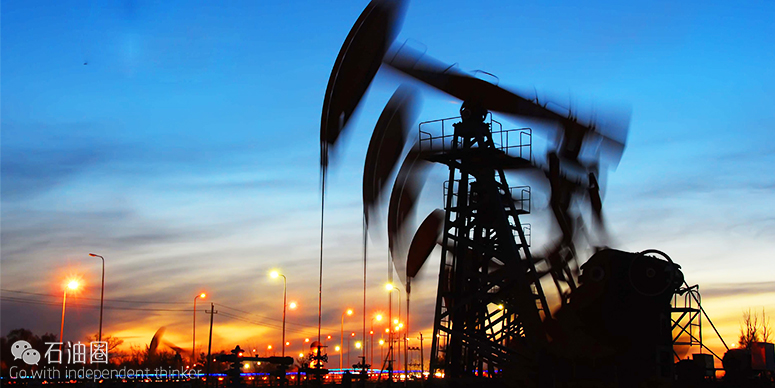The science of artificial lift has evolved dramatically, driven by operational challenges ranging from high-pressure/high- temperature deepwater oil reservoirs to liquids loading in natural gas wells producing below the critical rates and pressures needed to keep wellbores unloaded.
Arguably the biggest step changes in artificial lift technology, however, are being driven by the proliferation of horizontal wells in onshore resource plays, with their characteristic multiphase flow regimes and steep decline curves, ac- cording to Lloyd Heinze, a professor of petroleum engineering at Texas Tech University and executive director of the Southwestern Petroleum Short Course.
While more than 95 percent of all U.S. oil wells require some form of artificial lift (as do increasing numbers of gas wells), Heinze says future advances will revolve around two key challenges:
- Lifting the full liquid contents of long horizontal well sections as operators continue to extend lateral lengths; and
- Separating water down hole so that it does not have to be lifted to surface and then either disposed of or treated and recycled.
“The growth of horizontal wells in multiwell pads in liquids-rich shale plays already is, and likely will continue to be, the driving force of innovations in the artificial lift sector,” he states. “Sucker rod pumping is limited in horizontal wells, and both jet pumps and electric submersible pumps can be limited in these applications as well.”
Because of the limitations of the various types of pump systems, operators in many plays implement multiple forms of artificial lift at different points in a well’s production cycle. For example, Heinze notes, in Permian Basin tight oil plays such as the Wolfcamp, a well may be equipped initially with a jet pump or ESP to accommodate high flush rates, but then be converted to gas lift after a few months, and then to beam pumping after that, when production has declined to an optimal level for rod pumping.
“Artificial lift companies and operators will have to work together to figure out technologies that can pump the horizontal sections of the well faster and more effectively,” Heinze comments.
Downhole Separation
Similar in theory to solutions for down- hole gas/liquids separation, but more complex in practice, economic downhole oil/water separation (DOWS) has long been a key objective for both operating companies and equipment manufacturers. There have been applications of different DOWS con- figurations in North America, but the technology remains a moving target.
The idea, according to Heinze, is to separate water from oil using an in-well hydrocylone or gravity separation device, and then pump the oil to surface while directing the water within the same well- bore to an injection zone either above or below the productive zone.
“Treating and disposing produced and flowback water represents a significant cost for operators, especially in shale plays,” Heinze says. “Effective downhole oil/water separation would greatly reduce the cost associated with handling water in these plays, and also might allow additional oil to be recovered, helping increase estimated ultimate recoveries in low-permeability unconventional formations.”
In the meantime, oil and gas companies’ quest to improve asset performance, boost production economics, and maximize EURs is sparking innovations across all types of artificial lift technology, such as high lift-capacity hydraulic pumping units.
Hydraulic Rod Pumping Units
Tariq Ahmed, global product manager at Cameron, says that just as operators are opting for multiwell pads and are reducing their operational footprints at well sites, they also are seeking pump solutions that provide the necessary horsepower while minimizing the physical size and footprint of equipment on site.
According to Ahmed, the CAMLIFTTM 40-192 linear-lifting hydraulic pumping unit is a compact, lighter weight alternative to traditional beam pumping units. It is mounted directly to the wellhead to reduce space requirements, and is capable of a 192-inch stroke and a peak load of 40,000 pounds (comparable with a 912 conven- tional beam pump). The unit also operates with a full nitrogen counterbalanced sys- tem, and was designed specifically with shale wells in mind.
“There are four models in the CAM- LIFT product line, but the 40-192 is the newest,” he says. “It’s designed to help improve pumping life and production efficiency, and it takes one-tenth the physical space of a normal beam pump.”
Ahmed remarks that rather than waiting the usual two to four days for a hydraulic pumping unit to be transported and assembled on site, the CAMLIFT system comes preassembled, and technicians can install it in three-six hours. “That saves the operator several hours’ –if not days’ – worth of time that now can be spent producing, and money that otherwise would have been spent on additional equipment and transportation costs,” he emphasizes. “It probably can save an operator $30,000- $50,000 in installation costs alone.”
Whereas conventional lift methods use weights on the drill string to accelerate or decelerate lifting speeds, which Ahmed says requires a considerable amount of energy, the CAMLIFT has independent up- and downstrokes, and needs fewer strokes to produce the same amount, which reduces energy requirements as well as wear and tear on rods and tubulars.
“It gives the operator better control over his pumping units, especially regarding the speed and intervals between strokes,” he contends. “The CAMLIFT unit allows for delays and other adjust- ments between stroke lengths, which can be used to relieve gas lock.” Ahmed says the “biggest adopters” of the technology have been shale well op- erators, especially those in the Bakken and Eagle Ford plays.
“The hydraulic pumping unit is the perfect fit for operators looking to reduce their footprint, on any level,” he states. “It’s great for multiwell pad sites. It takes up very little space, which helps shrink the size of the site. Plus, it also has been shown to improve safety and reduce work risks on the well site. It is effective, small, safe, and cost-effective.”
TECHNOLOGY HIGHLIGHTS
- Minimizes installation costs
- Reduces operating costs
- Improves production efficiency
- Eliminates ground site preparation and installation time
- Uses less than 1/10 the footprint of a conventional pumping unit
- Quickly completes adjustments (such as stroke speed, stroke length, placing the well on/off tap) maximizing production efficiency
- The need for specialized crews and equipment to make system adjustments is eliminated


 石油圈
石油圈
